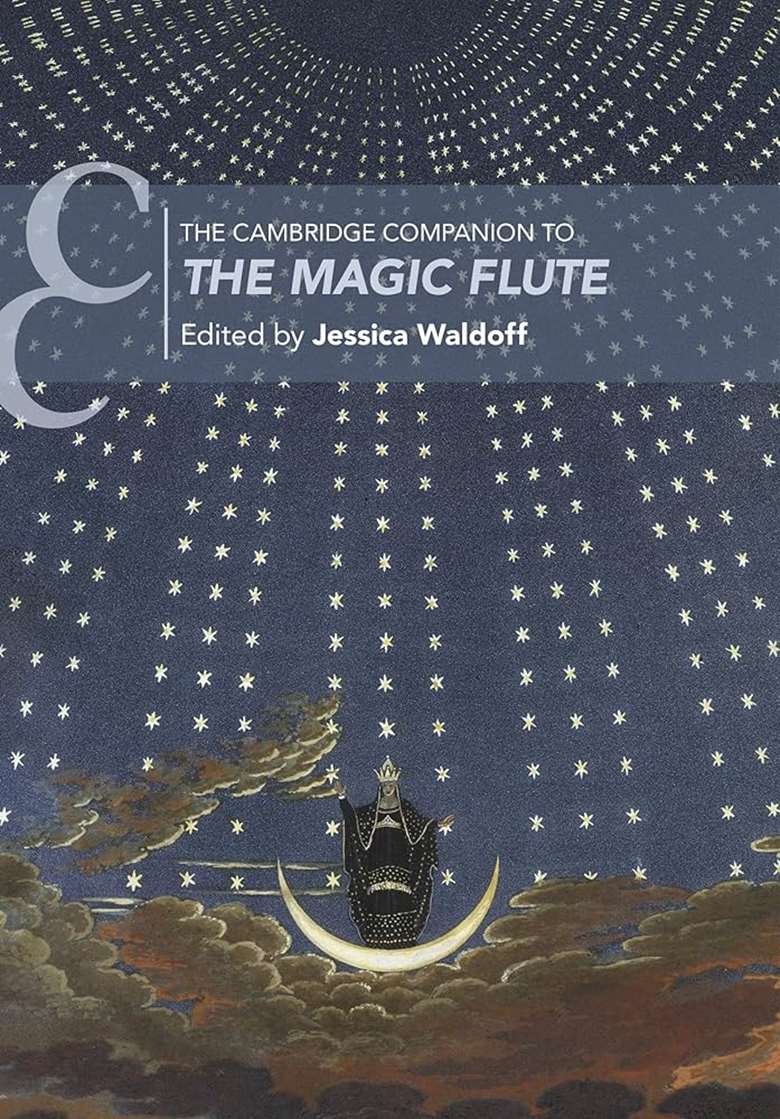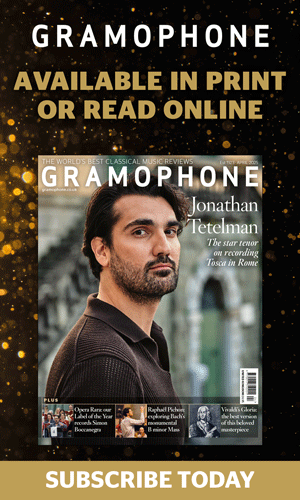Review - The Cambridge Companion to The Magic Flute, Edited by Jessica Waldoff
David Vickers
Friday, August 9, 2024
A fascinating, occasionally provocative and (mostly) accessible companion for anyone seeking Singspiel enlightenment

Jessica Waldoff observes that since the 1991 bicentenary of Mozart’s death ‘there have been significant documentary discoveries and developments’ that have expanded scholarly understanding of The Magic Flute. Key among these ‘explorations of Mozart’s contemporary Viennese and German contexts’ is David J Buch’s research not only debunking the exaggerated significance of Freemasonry but also proving that Emanuel Schikaneder’s libretto relates closely to other fairy-tale operas produced recently in Vienna. Buch is not one of the contributors here, although almost every chapter cites his publications. The editor’s choice of authors cultivates a fine balance between sagacious Mozart experts of longstanding renown and representatives of each successive new generation. Two-thirds are affiliated to North American universities; the rest are British. No Mozart scholars based in Germany, Austria or other Continental European countries are directly involved.
Estelle Joubert discusses the German National Singspiel company at the Burgtheater during the late 1770s and early 1780s, while Martin Nedbal examines librettos and literary antecedents that Mozart and Schikaneder must have known. Lisa de Alwis sets forth evidence about the location, characteristics, repertoire, personnel and audiences of the Theater auf der Wieden. Austin Glatthorn offers a focused commentary on Mozart’s circumstances and professional activity in 1791, and summarises the first production, cast and immediate critical reception of the opera. Overlapping case studies encompass two fairy-tale operas premiered by Schikaneder’s company at the Theater auf der Wieden (Oberon, König der Elfen, 1789, and Der Stein der Weisen, 1790) and Wenzel Müller’s Kaspar der Fagottist, oder Die Zauberzither (1791), produced across town at the Theater in der Leopoldstadt. Eye-catching iconography reproduced from early engravings in the original libretto printed by Ignaz Alberti (1791) and Joseph Schaffer’s etchings of scenes from the opera (c1794) are also available in higher resolution and colour from CUP’s website.
Magisterial studies of Mozart’s musicodramatic language are provided by Julian Rushton (‘Music as Stagecraft’), Laurel E Zeiss (a chapter devoted to arias titled aptly ‘Enduring Portraits’) and Nicholas Marston (a musicological analysis of ensembles and choruses that wins the comedy prize for his quip ‘Those magnificent boys in their flying machines’). Mark Ferraguto has the unenviable job of explaining and disproving some far-fetched attempts to index Mozart’s musical quotations and references to his own previous works and other sources – the only dead cert is a Lutheran chorale for the two men in armour. Emily I Dolan and Hayley Fenn co-author an assessment of Mozart’s instrumentation (beyond the obvious magical flute and bells). Catherine Coppola advocates a proper understanding and reinstatement of Schikaneder’s complete spoken dialogues – notwithstanding present-day unease at elements of racism and misogyny. John Platoff notes how Mozart’s musical tableaus in Acts 1 and 2 have common ground with (but also substantial differences from) finales in his da Ponte trilogy and contemporary fairy-tale operas.
There is also some heavyweight intellectual stuff. Richard Kramer evaluates to what extent we can realistically understand The Magic Flute in light of Kant’s ideas about the Age of Enlightenment. Matthew Head considers exoticism and ‘Enlightened Orientalism’ to make sense of the opera’s multicultural melange (Japanese, Turkish, Venetian, Egyptian, Persian, Moorish, etc); he compares the Three Genii granting wishes to The Arabian Nights. Thomas Bauman surveys the bewildering array of literary sources (stories, novels, plays, librettos) that writers on the opera have speculated about (seldom reliably) since the 1790s. Waldoff’s chapter about ‘the Representation of Women’ and Adeline Mueller’s polemical critique of ‘Blackness and Whiteness’ hammer home the libretto’s problematic issues.
Ian Woodfield examines the political and social contexts of the opera’s cultural phenomenon across German-speaking lands and the rest of Europe, including amusing tie-in merchandise available in Leipzig circa 1794 such as a board game akin to Snakes and Ladders (after rescuing Pamina and passing through trials, the winner gains admission to the Temple of Wisdom). Simon P Keefe sifts through the mangled, contradictory and notoriously unreliable myths, fictions and speculations about The Magic Flute to appear in biographies, criticism and literature (cinema also gets some attention here). Daniel R Melamed offers a succinct overview of what is (and is not) known about Mozart’s composition process and evidence found in his autograph (much of this ought to have been placed near the beginning of the book). Kate Hopkins’s admirable concision and acumen produce a thumbnail sketch of diverse stagings (and bowdlerisations) stretching from the mid-1790s up to the 2020s, and makes passing mention of Kenneth Branagh’s 2006 film adaptation. Dean Duncan reappraises Ingmar Bergman’s 1975 film version sung in Swedish and located inside Drottningholm Court Theatre.
Fewer chapters and perhaps judicious pruning might have diminished the proliferation of substantial repetition. It is disappointing that no space whatsoever is given to how Mozart’s music can be performed in different ways (whether ‘HIP’ or not). To my mind, sound recordings by the likes of Norrington are just as significant as Bergman at influencing perceptions of The Magic Flute. I’m puzzled that Cambridge University Press adopts Americanised spellings and dates. Nevertheless, this is a fascinating, occasionally provocative and (mostly) accessible companion for anyone seeking Singspiel enlightenment.
This article originally appeared in the September 2024 issue of Gramophone. Whether you want to enjoy Gramophone online, explore our unique Reviews Database or our huge archive of issues stretching back to April 1923, or simply receive the magazine through your door every month, we've got the perfect subscription for you. Find out more at magsubscriptions.com







